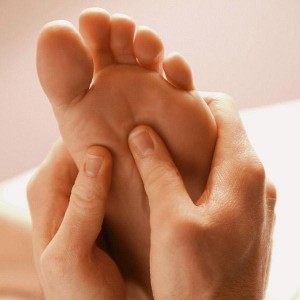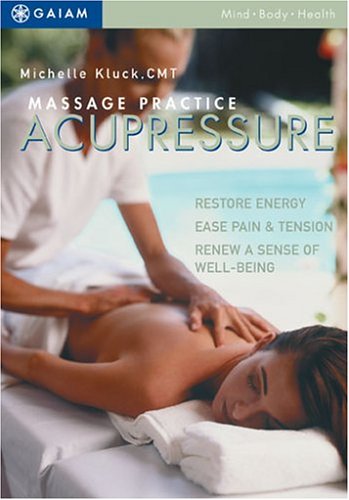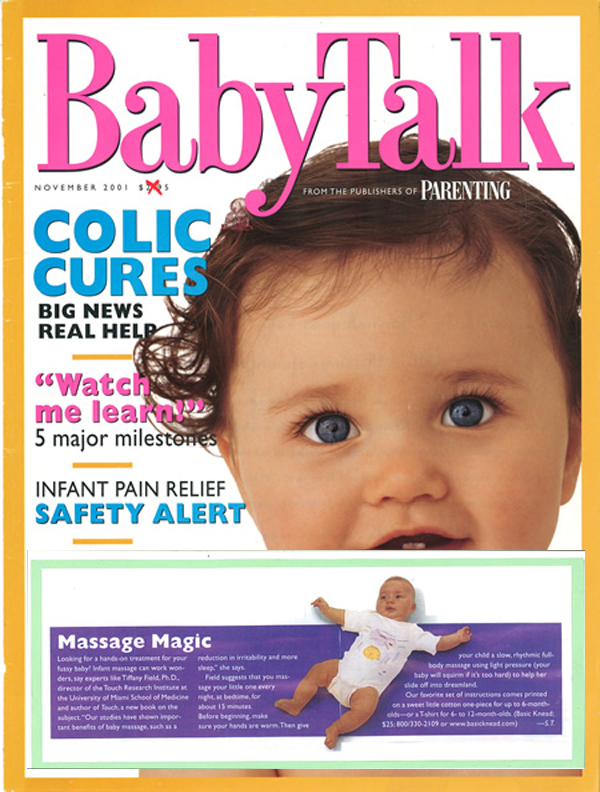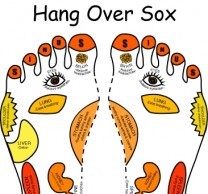October 15, 2010
In
Health & Well-Being, Massage, Massage Lotion & OIl, Men, Pregnancy, Reflexology, Research Studies, Stress-Relief, Touch Therapy & Sex, Women

Arvigo Maya Fertility Massage: More Than a Belly Rub
By Daphne Oz
Oprah.com | March 17, 2010
In the interest of making 2010 our year of wellness, Daphne Oz is on the case to find the ultimate in total mind, body and spirit care.
First, she explored the uses of aromatherapy. Then, she went a bit deeper with alternative medicine by looking into acupuncture. Now, she investigates Mayan abdominal fertility massage.
When you first hear that there is something called “Mayan abdominal fertility massage,” I know what you’re thinking: How could a belly rub possibly bolster fertility? When I first experienced the treatment as part of Soho House New York’s Wellness Week in January this year, I was just as skeptical. I have had a bunch of cats in my lifetime and recall that one of their favorite pastimes was to knead my stomach, every once in a while poking me with an outstretched claw. It was incredibly uncomfortable, and I feared that I had just signed up to have the human equivalent performed.
Perhaps because of this initial skepticism, I ended up leaving my 90 minutes positively raving. Not only was it delightfully relaxing, but my massage therapist’s explanation of how your digestive and reproductive tracts can both benefit from external abdominal manipulation makes complete sense.
That masseuse, Loretta Young, practices Arvigo Maya abdominal massage, a modern adaptation of ancient Mayan healing techniques that adds modern knowledge of anatomy, physiology and herbology. Through noninvasive massage, this technique gently manipulates the muscles and tendons that hold all the belly organs in place to bring all things back into alignment and promote proper functioning.
Arvigo Maya abdominal therapy was developed by Dr. Rosita Arvigo, a naprapath—someone who specializes in realigning the connective tissue—from Chicago who has spent the past 30 years living in the heart of Belize’s rainforest. Dr. Arvigo was an apprentice of Don Elijio Panti, who, when he died at the age of 103, was recognized in his New York Times obituary as “the last Mayan master healer in Belize.” For those who think herbal medicine is antiquated, 25 to 40 percent of all prescription pharmaceutical medications are derived from just 0.05 percent of the world’s planet species—including birth control of aspirin, both of which are made from wild yams. Imagine what medical miracles are hidden in the 99.5 percent of species that have yet to be analyzed for their medicinal properties.
Using Don Elijio’s techniques, Dr. Arvigo created Arvigo Maya abdominal massage in the early 1990s, teaching workshops in the United States and at her campsite in the jungle. In one of the weeklong seminars, Rosita and her staff first teach the art of self-care, stressing that in order to heal others, one must first be able to treat and understand the dynamics within one’s own body.
As part of the core curriculum at Arvigo’s workshops, students undergo rigorous spiritual intensives. All ancient Mayan medicine is based on the gratitude one must show for the bounty that the earth provides by giving thanks to God(s), and to the plants of the forest that work together in harmony to protect and prolong human life. Recognizing a force that exists external and internal to everyone, and connects all life, is fundamental to possessing the true healing power offered in these therapies. I felt this during my session with Young when she placed both her hands on my head as a way of introducing our energies and harnessing a universal energy and higher power to aid in the healing process.
Though Dr. Arvigo’s techniques have delivered results for a variety of gynecological and gastrointestinal ailments, they are typically to boost fertility. I’m not really looking for a bundle of joy just yet, so I was slightly less than eager to endure a half-hour of stomach-contorting toward such an end. But, as Young explained, women of all ages are thought to benefit from such work. When we experience sudden whiplash, jerking or repeated bouncing (such as from long-distance running), she says, the uterus can swing dramatically and become lodged in a sideways or tilted position. Young says this can lead to reproductive complications including PMS and, yes, infertility. And it never hurts to make sure everything in there is in good working order.
Furthermore, it can also be beneficial for men, because you boys tend to hold tension and stress in your stomachs by tightening the abdomen, which affects digestion by squeezing the esophagus and impeding deep breaths. Convinced, I gave her the go ahead.
You could picture Young reading meditation protocols to puppies: Her voice is soft and soothing, and she looks the perfect picture of someone who has spent her life cultivating a serenity that pervades patient and practitioner. Half-Korean, half-Central America, Loretta has rich, cocoa skin, arabesque eyes and a mane of shiny, black ringlets. Her hands are small and soft but very strong from years of working first as a prenatal masseur, then progressing through craniosacral therapy and into the abdominal work in which she now specializes.
To begin my treatment, Young first spread essential oils over the palms of her hands and had me inhale deeply. She then increased the energy flow within my body simply through light touch on my head and feet before beginning the actual belly massage portion of the treatment. Her technique was soft, firm and fluid. She pulled from one side of my stomach to the other, pressing her fingers deep into the flesh and pulling the underlying ligaments along with her in a gentle motion to coax out any entanglements or imbalances. Then, she massaged in a clockwise circle around my naval to smooth the surface and refresh the kneading-then-smoothing cycle.
It doesn’t sound like much, and I’m not doing it justice, but it was one of the most soothing sensations I’ve ever experienced—and nothing like the cat-pawing I had expected. I quickly found myself melting into the massage table as she lifted pressure away from my diaphragm and esophagus and my breath grew deeper. Then, she flipped me over and did a correlating back massage to complete the realignment. By the time it was over, I was ready for a good nap.
After I pried myself off the table and got dressed, I met Loretta in the spa’s softly lit sitting area for tea and a brief chat for her professional perspective on the Arvigo Maya technique. While she’s had incredible success with fertility-challenged couples, I asked whether her massage was worthwhile for someone who wasn’t looking to get pregnant. Learning to increase awareness of the dynamics in the pelvic region, and becoming increasingly connected with its sensations, stimulations and stasis, she says, can lead to increased sexual satisfaction. Relaxation plus body and sensation awareness equals orgasm—who knew? As with any area of the body, the muscles need to be taught how to respond and relax at the appropriate points. Additionally, abdominal massage helps to loosen and relax the muscles that overlay all the core organs, increasing blood and lymph flow.
In keeping with her teacher’s beliefs, Young is a huge proponent of self-care as a way to get to know one’s body better and to continue the healing treatment on a more regular basis. I want to learn—and she’s promised to teach me—but half the fun is getting someone else to rub your belly for you, right?





















